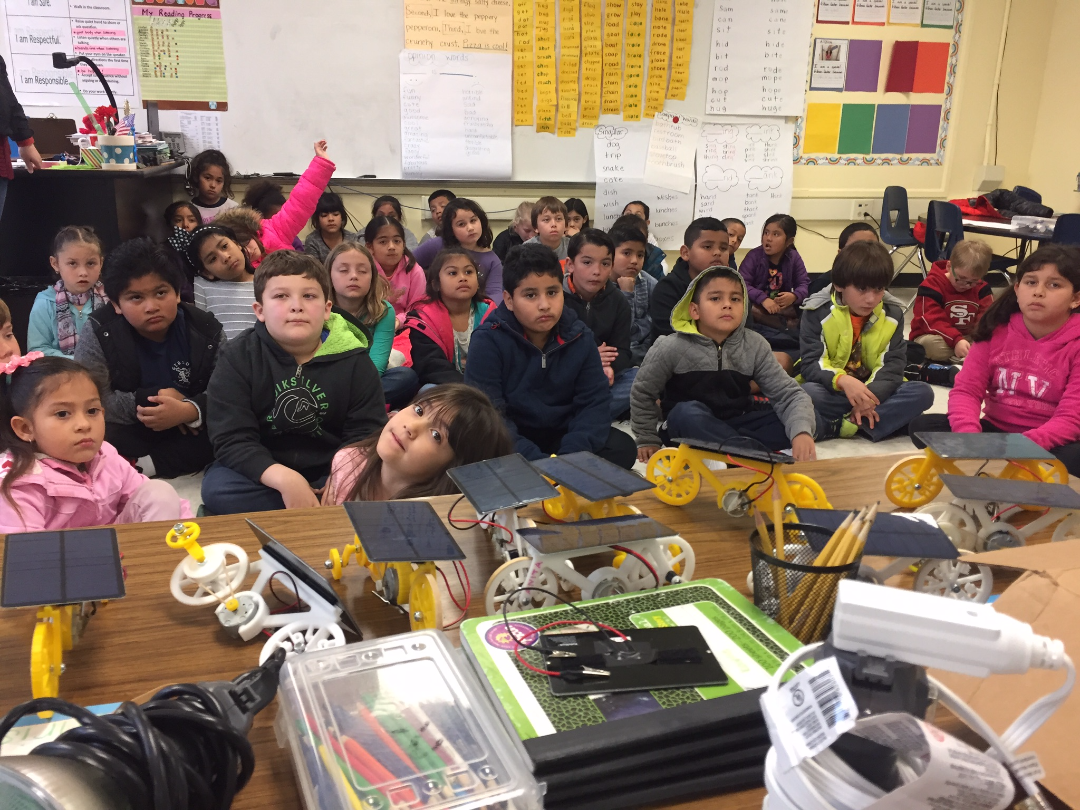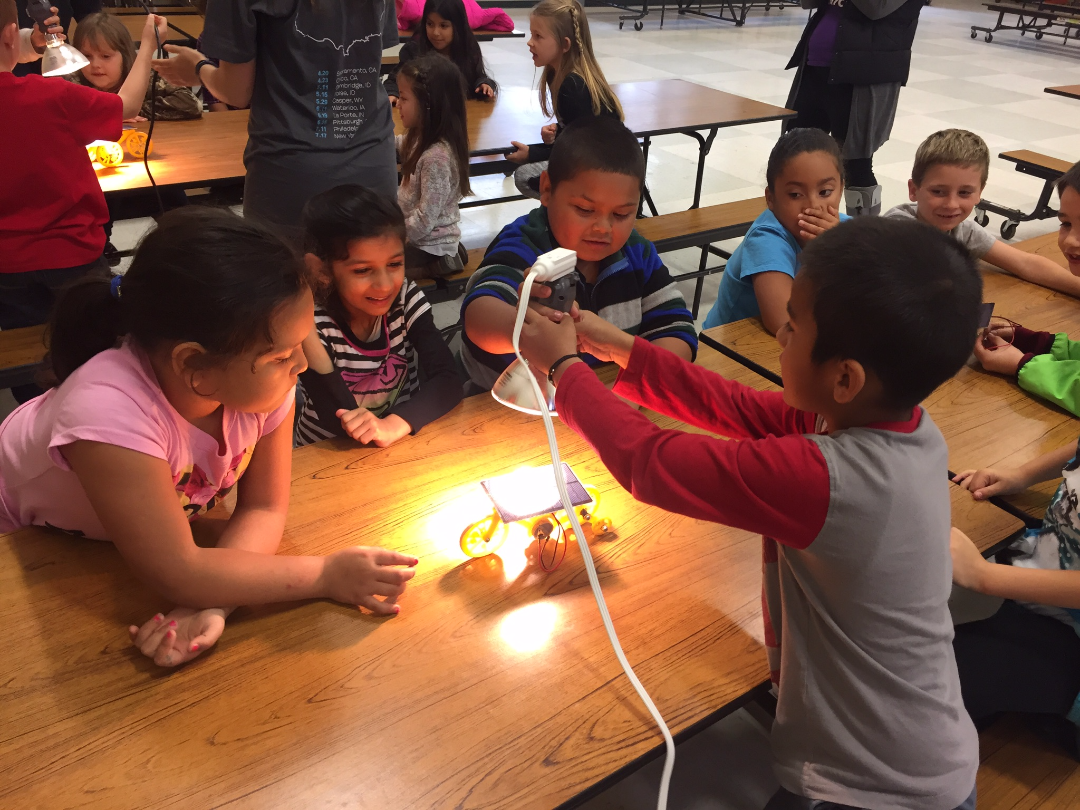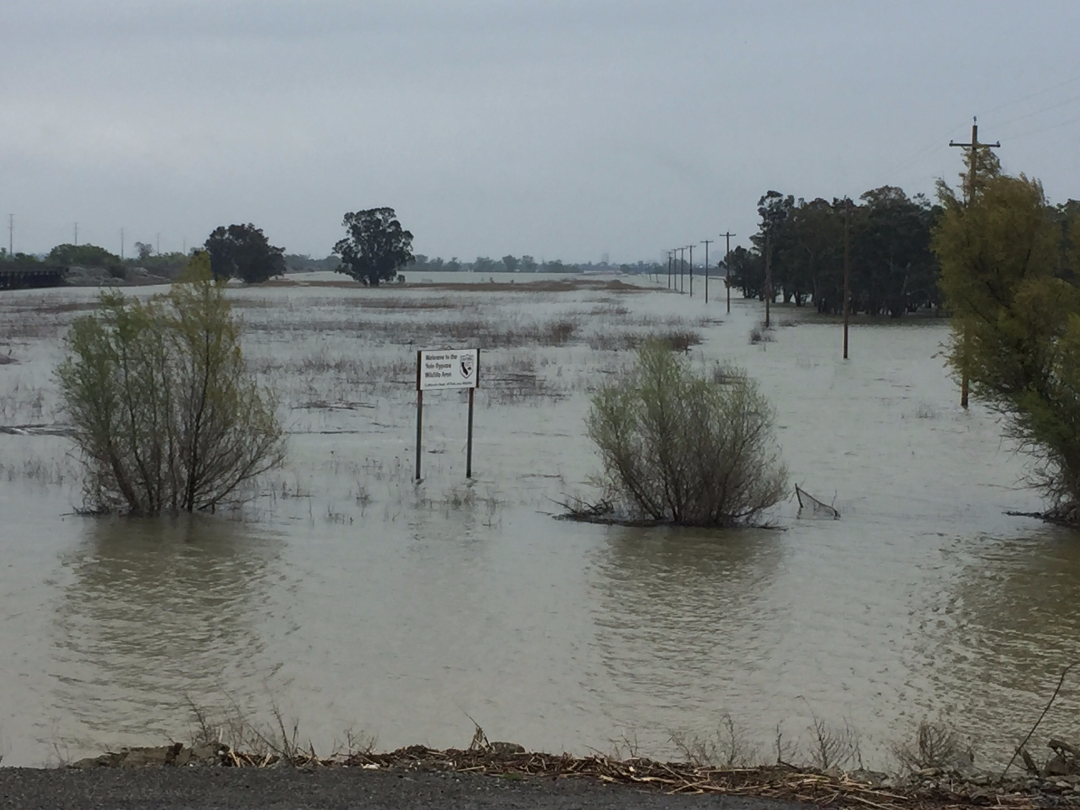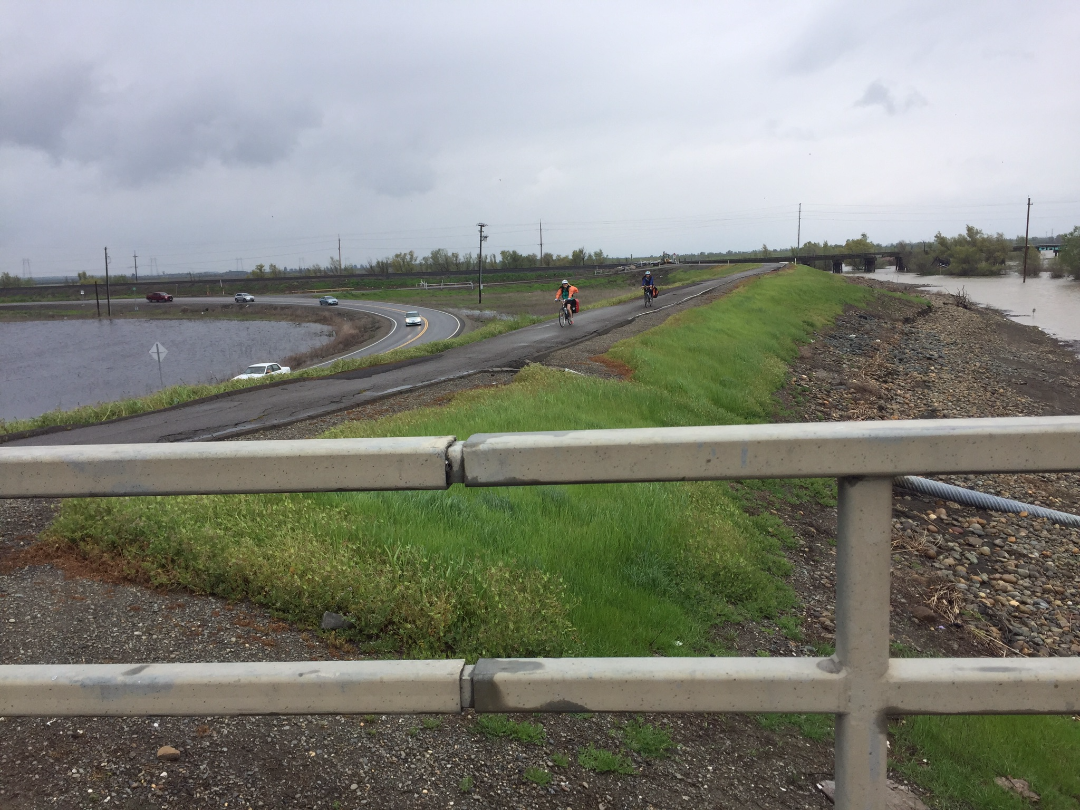Day 1: Teaching in Woodland and exploring the gamut of transportation options available in the Sacramento area (Davis to Lodi)
By Johanna
After sleeping for a grand total of three hours, we dragged ourselves out of bed to make the final preparations before heading over to Gibson Elementary for our first lesson. We had tried to superglue a few loose parts of the Sol Cycles together the night before, but as Rachel found out the hard way, it had not dried all the way. Haunted by images of six-year-olds accidentally gluing their fingers to their eyeballs on our watch, we did some damage control with electrical tape. We then threw our teaching materials in the back of the car (oops—because we had originally planned to teach in Sacramento, we didn’t have time to bike!), wolfed down some coffee and bagels, and headed over to Woodland. We set up in the school cafeteria and the first round of students streamed in.
The great thing about 6- and 7-year-olds is that none of them are too cool for school yet. The intensity with which they fling their tiny hands into the air to answer questions heightens the comedy when they realize through a string of stuttered um-I-think-well-maybe’s that they have no idea what the answer or is, or even what the question was. We weren’t sure what to expect in terms of their background knowledge because they haven’t covered energy or physics in the first grade yet. We got some funny answers (apparently, humans can stand in the sun to get energy instead of eating food), but many of them surprised us with their knowledge of satellites, solar panels, and electricity.
When it came time to actually play with the Sol Cycles, the students were ecstatic. They were given partially assembled models and had to figure out where to attach the alligator clips to get the bikes to move. Because our solar-powered adventure happened to kickoff on a rainy day, we had to use “mini-sun-machines” aka halogen bulbs to power the Sol Cycles. Kelly and Johanna were still getting to know the Sol Cycles and their quirks, so we were learning right along with the students. The Sol Cycles hadn’t been fully tuned up before entering the spotlight, so some tears of six-year-old frustration were shed when their Sol Cycles didn't work perfectly, but overall the students had a great time. One girl said it was "the best day EVERRRR!!!” and we each got enveloped in at least one giant group hug.
Using the lamps instead of the real sun had its advantages—it allowed us to ask students to make predictions about what would happen when the “sun” turned on, see the results, and then reflect. They got creative with the wiring and one team of second graders was able to hook up two Sol Cycles to ride alongside each other!
From Gibson, we drove straight to CVS to stock up on first aid supplies and more snacks for the road. We also had A LOT of packing left to do. Our plan was to catch a train to Sacramento and then bike to our host’s home in Lodi. We spent our last two hours in Davis frantically shoving odds and ends into our panniers, consulting train schedules and packing lists, and repeatedly telling each other “Ok, now we really have to leave.” In the process we realized we were short Rachel’s tent, which had fallen out of the car at some point the night before (Rachel has a knack for losing tents), so Johanna’s trusty old beat-up one-person tent came out of retirement in the closet for a new adventure. About ten minutes before the train was scheduled to leave, we perched the unwieldy cardboard box containing all the Sol Cycles precariously on Johanna’s handlebars and teetered off in the direction of the Davis Amtrak station.
Alas, at the end of our frantic flight to the train station, we had missed the train by about three minutes and had to reevaluate our plans. We swapped the cardboard box out for an actual toolbox (abundantly adorned with Cycle for Science stickers, of course) to bungee to the back of Kelly's bike. We decided that rather than riding for several hours after dark on a rainy night and showing up at our host’s home way past our ETA, we would bike from the Davis Amtrak station to the Sacramento Amtrak station, and then take the train from there.
The ride from Davis to Sacramento took us alongside I-80, including a stretch up and over the Yolo bypass area that was intentionally flooded earlier this year during the heavy rains in northern California. The Department of Water Resources opened several weirs on the Sacramento River for the first time in a decade to avoid flooding populated areas, instead submerging the surrounding farmland and protected wildlife areas. It was strange to feel the wind of I-80 traffic whizzing past us on the right and hear birds chirping as they swooped and flitted over the flooded wildlife area to our left. Eventually our protected bike lane dumped us into Sacramento along a boulevard full of dilapidated motels, and from there we made our way to a bridge crossing over the Sacramento River.
After a somewhat meandering ride through Old Town Sacramento, and then a quick and technically illegal bike race through the Amtrak station, we managed to catch the train this time around, with about 2 minutes to spare. An Amtrak employee who kept referring to us as “you boys” led us to the absolute farthest car of the train and we couldn’t help but feel a tiny bit of schadenfreude when he mucked up his white uniform with chain grease after insisting on lifting our bikes onto the train for us.
When we arrived in Lodi, we had a quick ride to Jerry and Jeanette’s home. We found them through Warmshowers, a slightly creepy-sounding site that is really anything but: it’s a platform for bicycle tourists to host and stay with each other while touring and we met many wonderful people through it on this trip. When we arrived, Jerry showed us into the garage where he had set up three beds for us with a nice toasty heater. We barely had time to unpack and clean up before we were whisked inside the house to enjoy a delicious and nutritious pasta dinner with Jerry and his wife Jeanette.
Jerry and Jeanette have solar panels on their roof and an impressive home garden, sporting a DIY drip irrigation system, so we knew we would be right at home. Over dinner they shared tales of their exciting lives – Jerry sailed all the way to Vanuatu in the 80s and Jeannette flew to meet him there with her daughter. They said that some of the communities in the South Pacific at that time were already concerned about rising sea levels. They lived in the South Pacific for two years, running a business harvesting snails and selling them as escargot. After their South Pacific adventure, they got into biking and did many tours together, including one tandem ride across France and many trips around the US. They were also setting out the next day (!) for a trip to China, so Jeanette was thrilled to practice her pronunciation of some key haggling phrases with Kelly. Her favorite was tài guì le – “too expensive!”
Our conversation inevitably made its way toward solar energy. Jerry and Jeanette have solar panels on their home and told us about the unique program Lodi has whereby customers can receive a tax rebate for their rooftop solar system. The city of Lodi has its own electric utility which is subject to the SB350 requirement that half of its electric sales come from renewable sources by 2030 and, unlike Investor-Owned Utilities like PG&E, it can count individually owned rooftop solar systems in its network as part of its renewable portfolio. You can read more about Lodi’s individual rooftop solar system incentives here.
Jerry and Jeanette's bicycle haven, replete with mattresses, canoes, maps, and bikes-bikes-bikes!
After picking their brains about solar panels, we started talking about education. We could tell right away from her engaging tone, composure, and presence that Jeanette had been a teacher. When we asked, she confirmed that after a few other jobs, she had become a teacher and then a school principal in large part because people kept telling her that she seemed like a teacher! Her biggest piece of advice to us was to stay on topic and not go off on tangents if the students asked us off-topic questions. Jerry had also been a teacher in Stockton, and shared some of the activities he had done with his students and some more tips about classroom management.
As the meal wound down, Jerry brought out a good old paper map and showed us the best route to get to Stockton, relying on wisdom and local knowledge that google maps just can’t compete with. He then fired up the hot tub, and we went to do some lesson planning and discuss our plans for the next day as we soaked away our first hectic day on the road.







